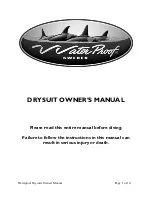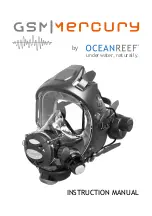
Fret Leveling
It is highly recommended to purchase a fret leveling kit if you want to setup guitars yourself. Tiny differ-
ences, to a fraction of a millimeter, can cause fret buzz. Even starting with perfectly level frets, playing the
instrument over time will cause wear which will translate into height differences and string buzz. This is
true of all stringed and fretted instruments, from DIY kits like this to top-of-the-line models from the largest
manufacturers.
A fret leveling kit should consist of a Fret Rocker, a Fret Sanding Beam, and a Fret Dressing File. The Fret
Rocker will allow you to identify the high and low points of your frets so you know what areas need to be
sanded down. The Fret Sanding Beam is used to create a uniform height across all the frets on the guitar.
The Fret Dressing File smoothes imperfections left from the Fret Sanding Beam and creates an ideal playing
surface on the fret itself.
Setting Action
A guitar’s action is the difference in height between the strings and the frets, or how high the strings are
above the frets. Action is determined by personal preference. Some people like it higher and some people
like it lower. Start by checking the action over the first fret while fretting the low E string between the sec-
ond and third frets. The action here needs to be .006 of an inch. If it is too high, use a needle file to deepen
the string groove in the nut. If it is too low, you can build up the groove with nut a combination of nut shav-
ings and super glue.
Once the nut action is set properly, the overall action can be set at the bridge. A small hex wrench is includ-
ed in your kit to make these adjustments. Measure the height of the strings over the twelfth fret. Starting
at a height 1/16th of an inch will get you in the right neighborhood. Adjust to taste, higher or lower, from
there.
Intonation
Intonation means having the string sound the correct pitch at every fret up and down the length of the
fretboard. This is a simple adjustment, accomplished with a screwdriver on the bridge to shorten or length-
en the string itself. Check the intonation by comparing the open string note against the harmonic on the
twelfth fret. Use a digital tuner, because you want this to be exact. Tighten and loosen the screw for each
string until the open note and the harmonic match pitch.
Keep in mind that there is a break-in period for guitar strings and you may need to repeat this step several
times over the course of a few days until the strings settle.
Guitars and basses and all stringed instruments are based on tension of the strings, the metal
and the wood. There is no such thing as a one-time setup. Through the life of the instrument,
you will be performing these tasks multiple times to keep it in top shape. Purchasing the cor-
rect tools and learning to use them will save you money in the long run. There are numerous
resources available on the internet and we are always happy to help. Contact us at (877) 347-
6423 or email [email protected] with any questions.


























